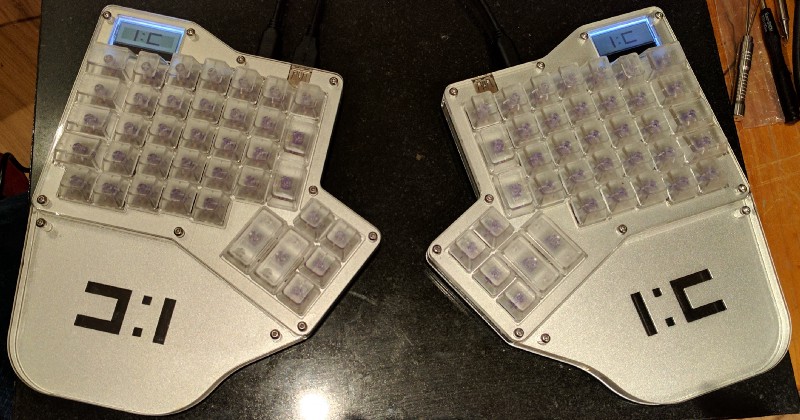I made the decision a while ago that I wanted to get a mechanical keyboard, so I started to look into it and found that there is quite a lot going on in that area of keyboards.
My first stop was to search using Google and see what I could find. It showed me quite a few sites which appeared good: Mechanical Keyboards, Code Keyboards and WASD Keyboards (who make Code Keyboards) to name some, but the most useful link it gave me was to the Reddit community /r/MechanicalKeyboards. There are some fantastic resources available in the wiki for that subreddit (switch guides as an example) and the people are nice and keen to help where they can.
Using /r/MechanicalKeyboards I was able to see many examples of keyboards and custom keyboards and work out what it was I wanted from my own. Being a developer I spend a lot of time using a keyboard and I wanted something that was ergonomic but allowed me to define the layout of the keys.

The first one I looked at was the Code Keyboard as it was co-created by Jeff Atwood and while it did allow for multiple layouts and the ability to disable certain keys, it wasn’t as flexible as I wanted and it isn’t really ergonomic. After all it is the traditional size and shape of keyboard.

So I kept looking around and found many keyboards of all shapes and sizes. Some of them interested me and some of them looked a bit much. The one that interested me the most was the Ergodox (not linking to the official site as it seems like they lost control of the domain). A keyboard designed by enthusiasts and open sourced for anyone to build. As you might expect, looking around for an off the shelf version didn’t turn up anything. There are two places, I found, where you can get it: Massdrop and ergodox-ez which both supply a kit so you can build the keyboard yourself. I wasn’t sure I wanted to go down that route, so I decided to keep looking.
In looking around I saw some really nice keyboards but nothing that grabbed me the way the Ergodox did.
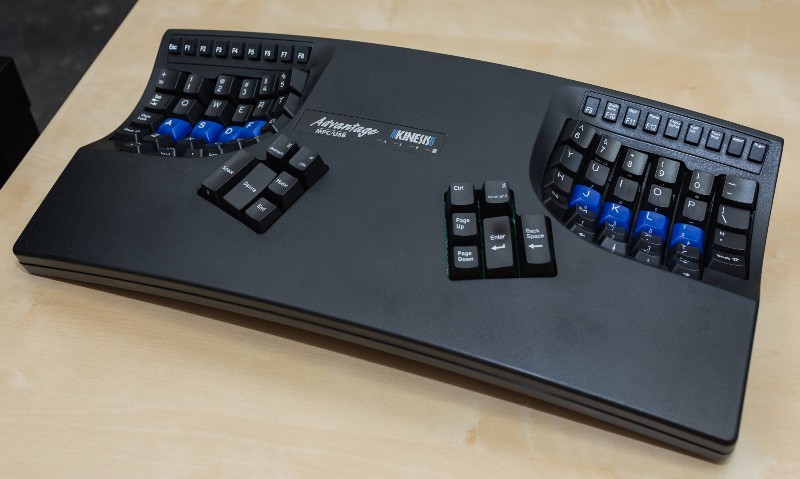
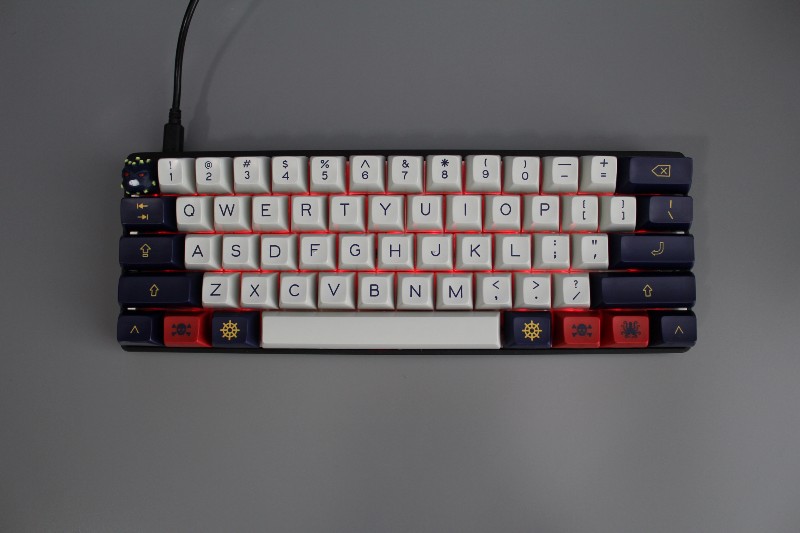
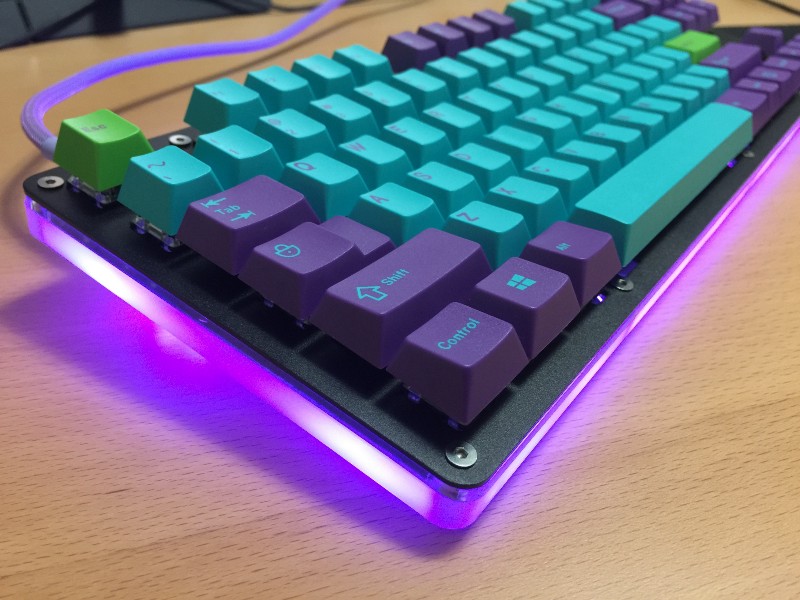
Then I stumbled across the Infinity Ergodox, created by input.club as a fork of the Ergodox, it offers some improvements over the original design.
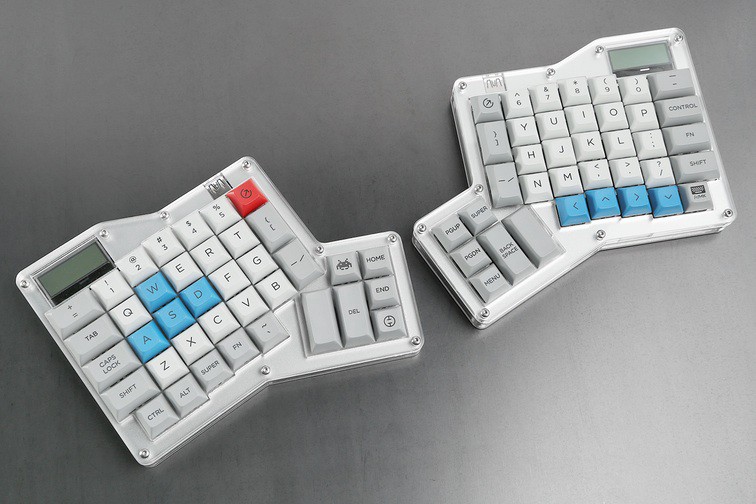
The goals for the Infinity ErgoDox were the most complex objectives in any modern keyboard we know of.
- Open Source Design
- No Upfront Tooling Costs
- Fully Programmable Keys
- Split Keyboard Functionality
- LED Control Screen
- Infinite Layers in each Half
Reading about the keyboard on the official site persuaded me to go for it, both halves of the keyboard are fully functional on their own and fully programmable. It is only possible (as of this posting) to buy on massdrop.
This research also introduced me to the different layouts that have formed over the years of the typewriter and keyboard and the history of both. The qwerty layout was formed for physical reasons. The keys of the typewriter would jam as people typed, which caused the creators of the Sholes and Glidden typewriter to try to find the optimal layout that would allow people to type at a higher speeds without jamming the keys. Not to say it didn’t have its own issues. So qwerty, designed over a century ago for a typewriter, still in use on keyboards, mechanical and non-mechanical alike, where the reasons for its existence no longer exist, I figured it would be a good time to check out alternative layouts.
After some searching and reading up on layouts. I decided that I would start using the Dvorak layout and have switched my phones keyboard over to it. But more specifically for my Ergodox I decided to switch to a variant of Dvorak, Programmers Dvorak.
So with that research and decision made I bought it. Then I had to wait… and wait. Until finally it was delivered.
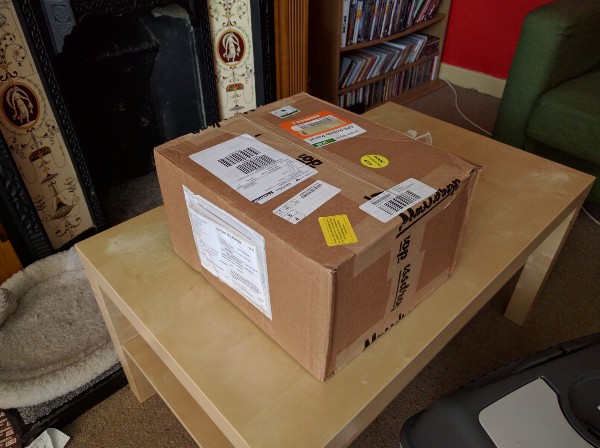
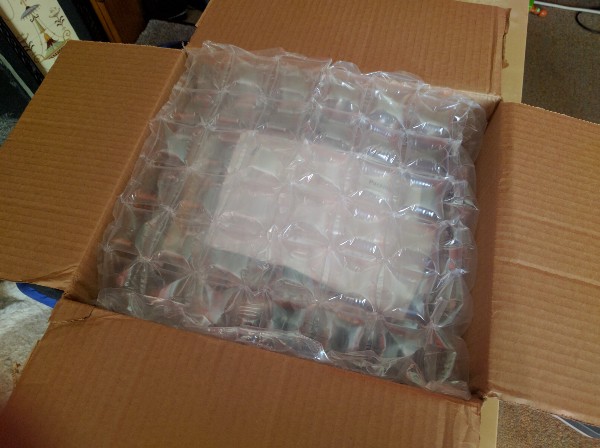
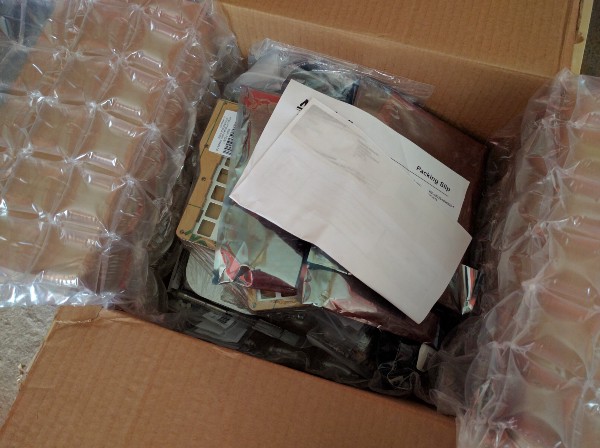
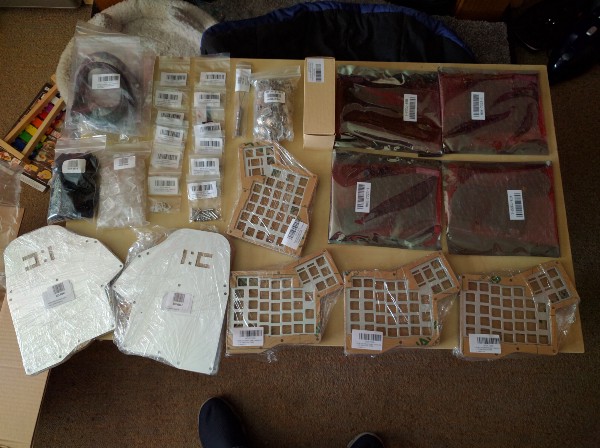
Before starting in on putting it together I decided to get some practice in with soldering as I hadn’t done any in at least 15 years. It took a bit to get into it again and with some help from my parents who both have experience with it, I was able to get going.

So I started putting it together. I went with the 65g Zealio switches and a blank, clear DCS keycap set. To get an idea of how it looked put together I loosely built it, without the PCB in place and without removing the protective paper from the clear plastic casing. I also opted to get the extended hand rests for my build.
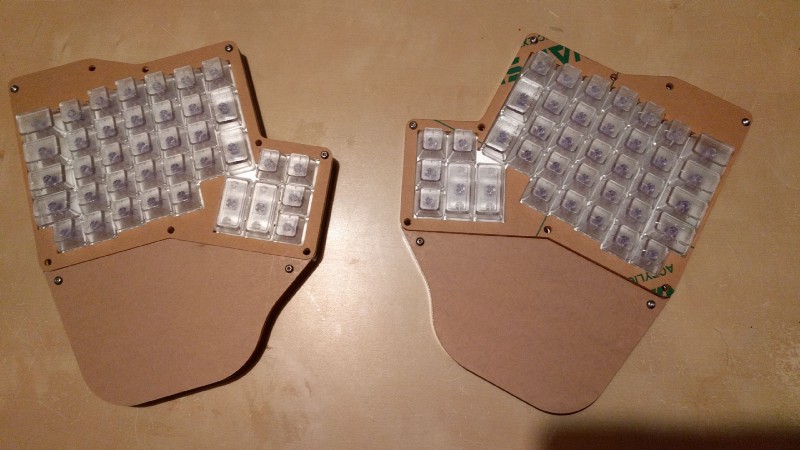
It looks and feels nice and I can’t wait to get started building it properly. So I get out the things I need and I take apart the keyboard and end up with this.

Next I put the PCB on the switch mounting plate and apply some pressure to get the switches in place on the PCB.
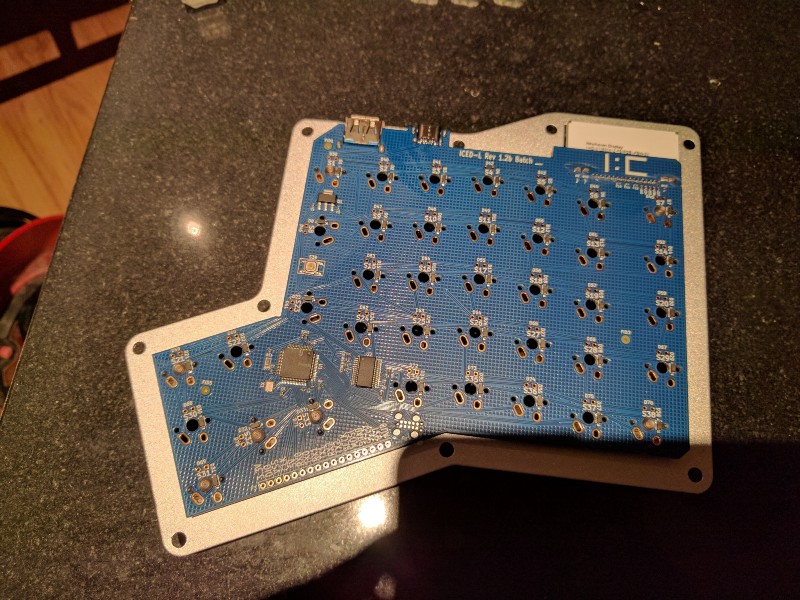
Then I solder each of the currently mounted switches so the PCB is firmly in place and will stay there while the rest of the switches are mounted.
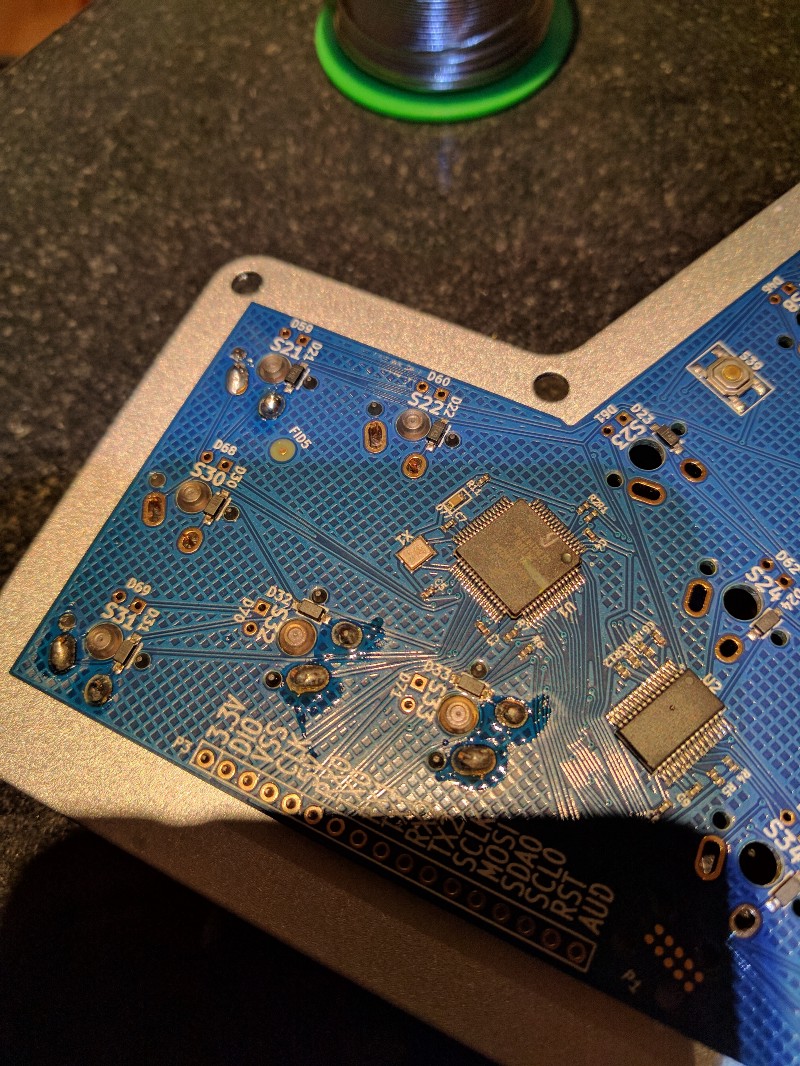
So I go through all the switches and mount them to the Plate and PCB and solder them in place.
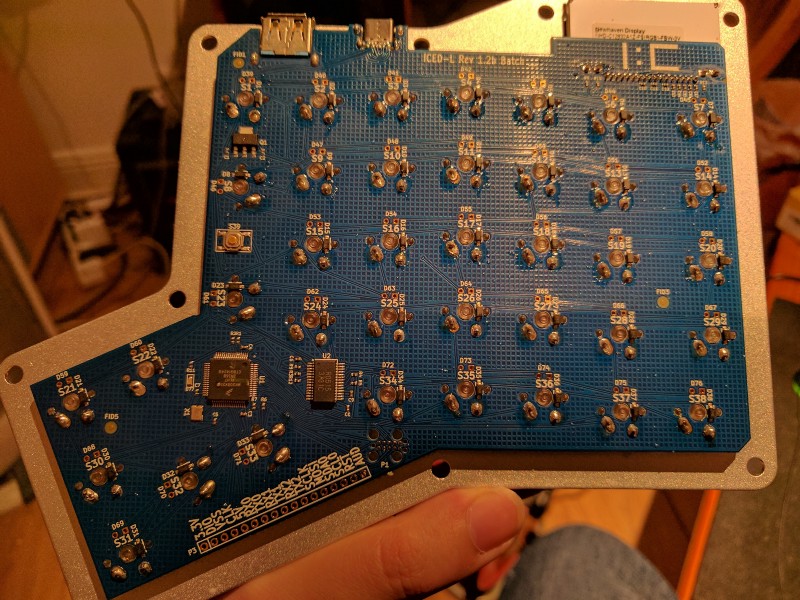
Then we test the keyboard to make sure it is all working as expected. But it’s not. I open a text editor on my laptop and plugin the keyboard and start pressing the keys. Some of the keys are fine and work as expected some of them fire when I touch the key, not applying any pressure, just touching the key. Thanks to /r/MechanicalKeyboards I was able to find out that the switches I went with can have this problem called chatter and that there is a fairly easy fix for it.
The problem that causes chatter is when the two contacts, one stationary and one which moves when the key is pressed, in the switch are touching when the key is in its resting position, i.e. not pressed, or touch earlier than they should. To fix the problem, requires that you remove the top of the switch and apply some pressure to the stationary contact slightly bending it towards the center of the switch and then reassembling the switch.
You can test the switch using a multimeter to see that it is working correctly. So using the multimeter I was able to check exactly which switches were having trouble with chatter and then using 3 hair pins I was able to remove the top of the switch casing and adjust the stationary contact using a small screw driver.
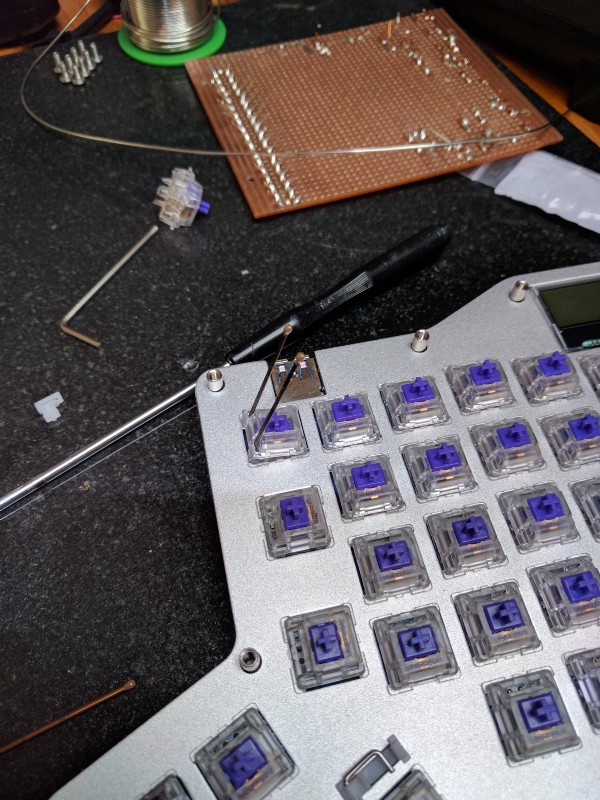

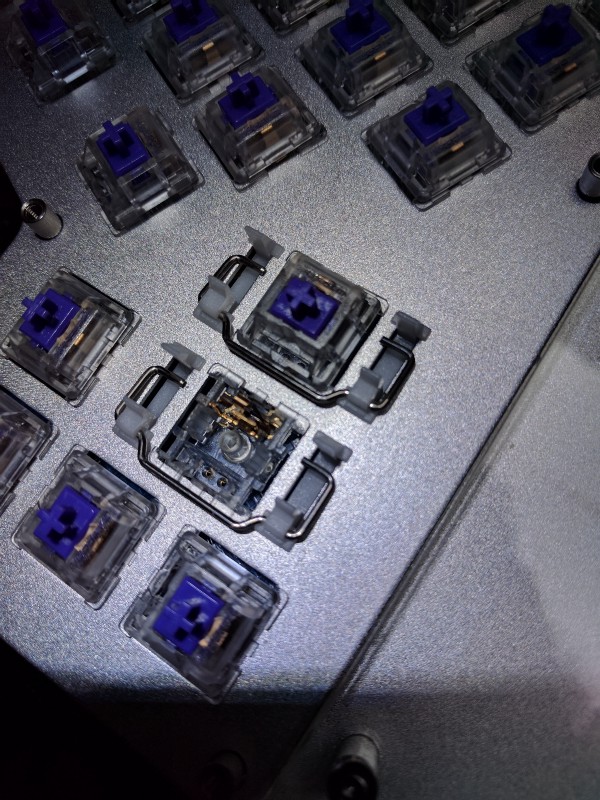
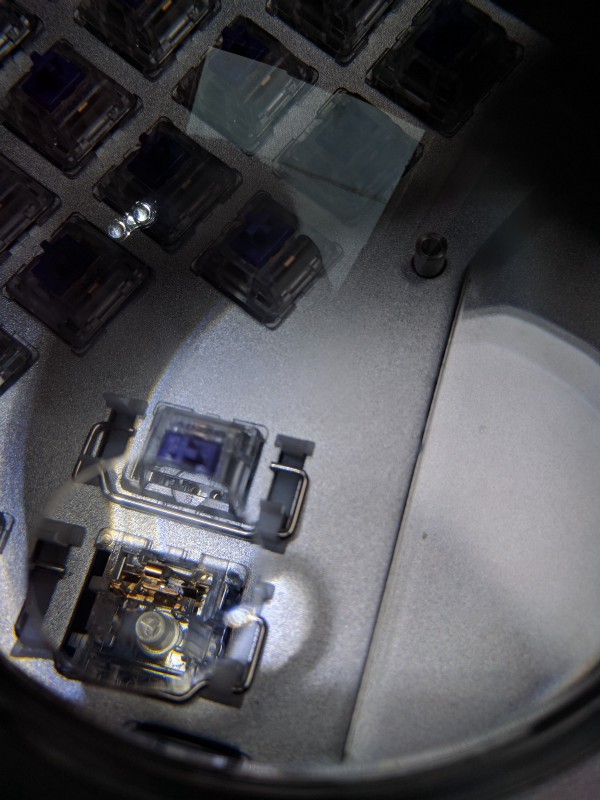
I fixed all the affected switches and tested again on my laptop and all was good, no chatter and the keys worked as expected. I believe Zealpc have sorted this issue for the next round of switches and that it is expected to run this January (2017). This had to be done to both halves of the keyboard.
I am very pleased with how this turned out and am excited to start using my new Ergodox. It will take some time to get used to because it’s pyshically a new keyboard layout but also because I’m switching to a new character layout. I had a lot of fun putting this together and recommend to those interested that you go for it. Obviously it doesn’t have to be an Ergodox, what ever you choose to go with whether it’s 40%, 60% or the full 105 key keyboard, doing the research, purchasing and finally putting it together are all part of the fun and even if there are issues, like the chattering issue with Zealio, that can add to the fun if you let it 😀.
